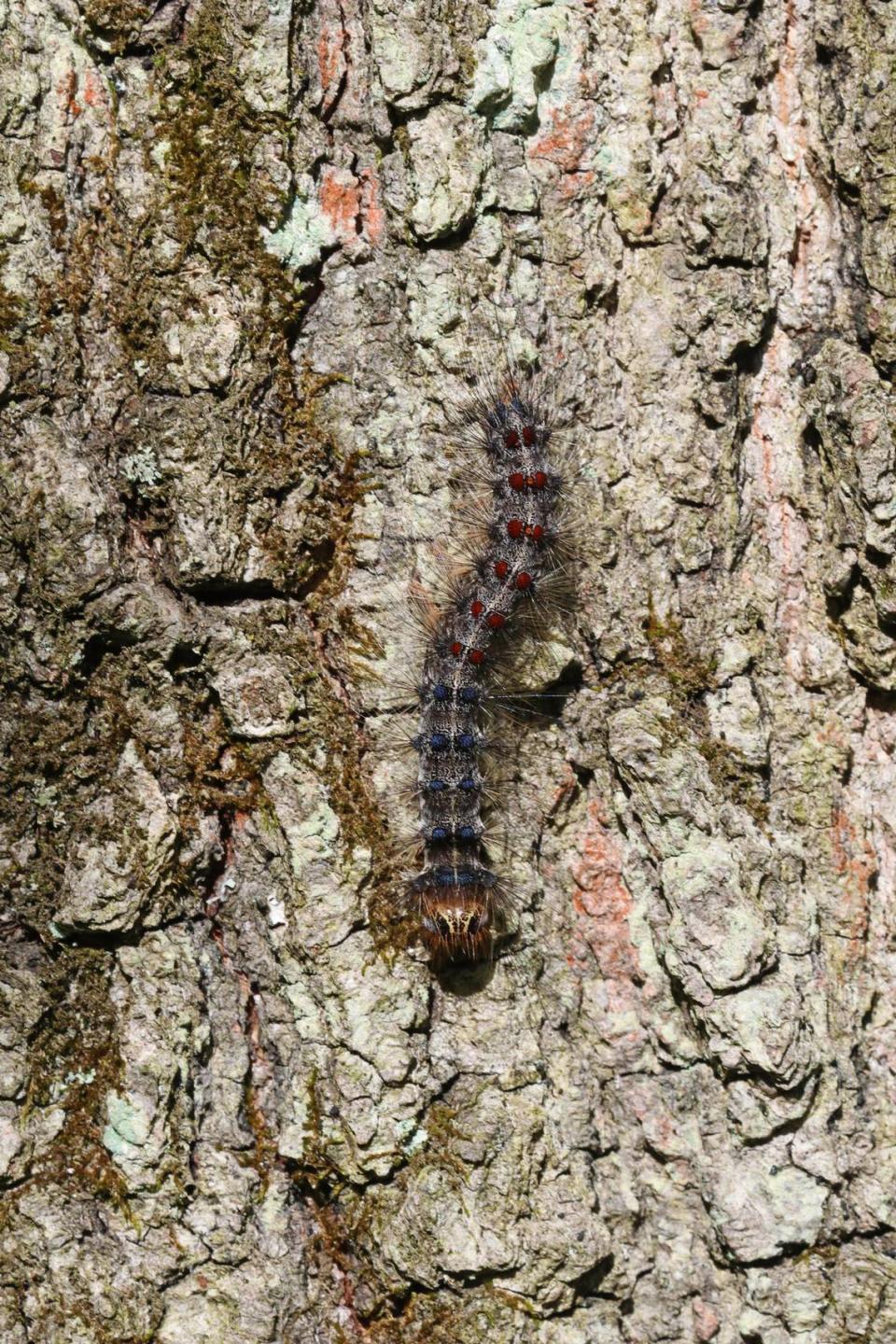Township to spray for ‘serious forest pest’ this spring. What it means for residents
One Centre County municipality will take steps this spring to address what Pennsylvania officials call a “serious forest pest.”
Patton Township will spray nearly 1,300 acres of wooded neighborhoods in May and June to help “control spongy moth caterpillar activity,” township manager Douglas Erickson announced Monday. The move is expected to protect trees from defoliation prompted by feeding spongy moth caterpillars, formerly known as gypsy moths.
But how safe are these insecticide sprays? And are measures to combat spongy moth caterpillars truly necessary? Here’s what you need to know.
What to know about the spongy moth
While they may look like any run-of-the-mill caterpillar, spongy moths are one of the most costly invasive insects in Pennsylvania.
They were first introduced in Massachusetts in 1869 by a French scientist attempting to discover a disease-resistant caterpillar to help increase silk production, according to the Pennsylvania Game Commission.
The insects were first detected in northeastern Pennsylvania in the early 1930s and prompted significant forest damage over the years, including notable recent outbreaks between 2013 and 2019. The most recent spongy moth outbreak in the commonwealth began in 2021.
Spongy moths’ danger comes from their feeding habits that can strip trees of their leaves. According to the Pennsylvania Department of Conservation and Natural Resources, they prefer to eat the leaves of oak trees, though they are known to also feed on hundreds of other tree and shrub species, including:
Apple
Alder
Aspens
Basswood
Birches
Hawthorn
Hemlock
Tamarack (larch)
Pines
Spruces
Willows
Witch hazel
Spongy moths in their caterpillar stage have the largest appetite since they need the energy to aid their growth. Adults, meanwhile, do not feed.

Defoliation from spongy moths and other insects can ultimately kill trees, the DCNR says. That process can often take more than a year, but some defoliated conifers can die after just a single season. On the other hand, a particularly healthy tree that was defoliated can refoliate the next year if it is strong enough.
Much like the dreaded spotted lanternflies, spongy moth habits are a leading factor behind damage to trees and crops throughout the U.S. The Pennsylvania Game Commission estimates foliage-eating like spongy moths cause an estimated $868 million in annual damages across the country.
Are spongy moth sprays dangerous?
No. While their names may look complex, the chemicals used to combat spongy moths are generally considered safe for humans and other creatures.
Patton Township says it will conduct its sprays using Foray 48B, whose active ingredient is bacillus thuringiensis subspecies kurstaki, commonly referred to as just BtK. The insecticide is powered by a natural soil bacterium that produces a protein that binds to specific receptors found in the guts of only butterflies and moths (lepidopterans) in their larval stages, eventually contributing to stomach poisoning and leading to death, the DCNR says.
BtK treatments can affect non-target butterflies and moths, but the insecticide is effective against only those that are already in the larval stage. Ever-popular monarch butterflies, for example, do not lay eggs in northern states until late spring or early summer. Some larvae are often not spotted in Pennsylvania until late June or early July, according to the Monarch Joint Venture, a nonprofit committed to building partnerships that help conserve monarch butterflies and other pollinators. Larvae that are not present for insecticide sprays should not be affected.
Spongy moths typically lay their eggs in the summer before masses hatch the following spring. Mid-May through early June presents the best window for insecticide treatment because at least 50% of the caterpillars are in their second stage, the DCNR says.
Bt-centered insecticides have “the highest known degree of safety to human health and the environment of any insecticide currently on the market,” the DCNR said.

 Yahoo Autos
Yahoo Autos 